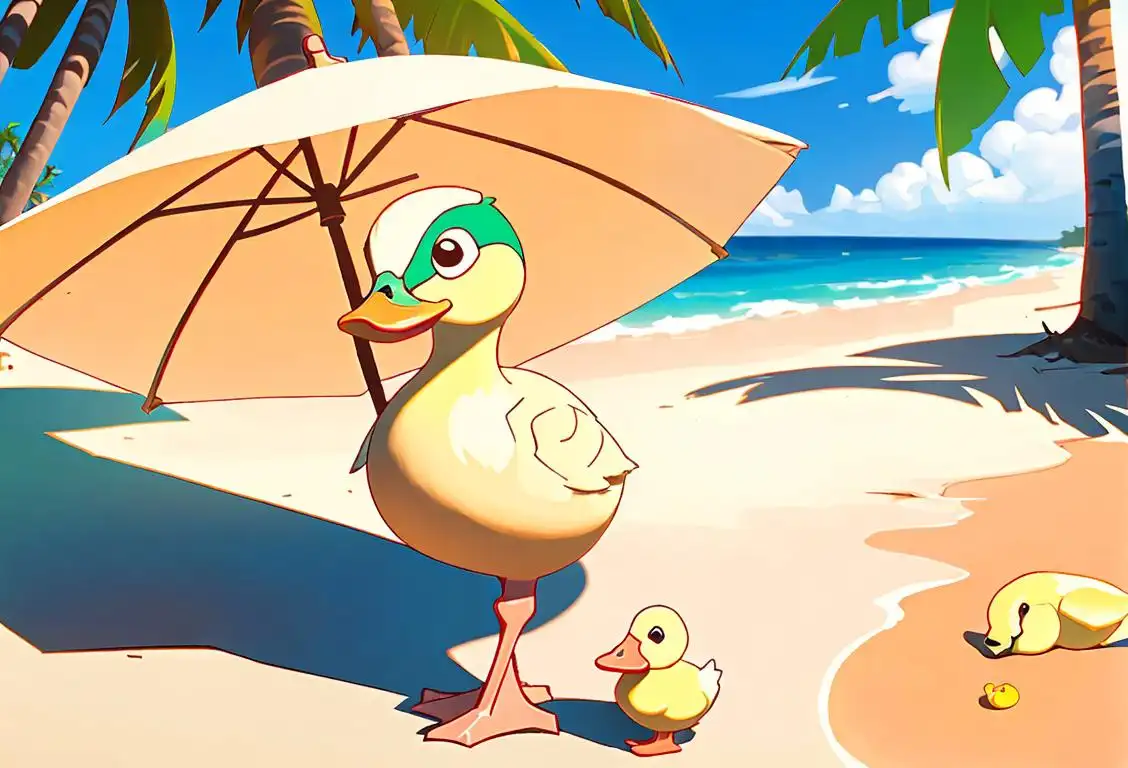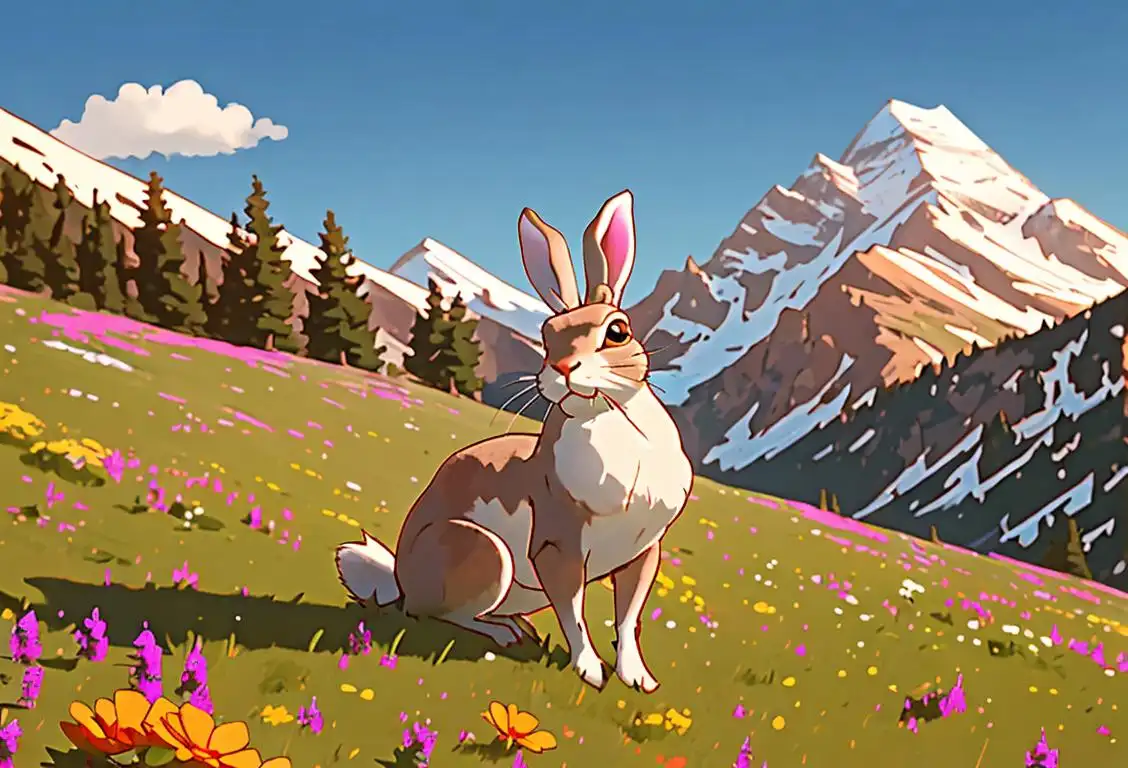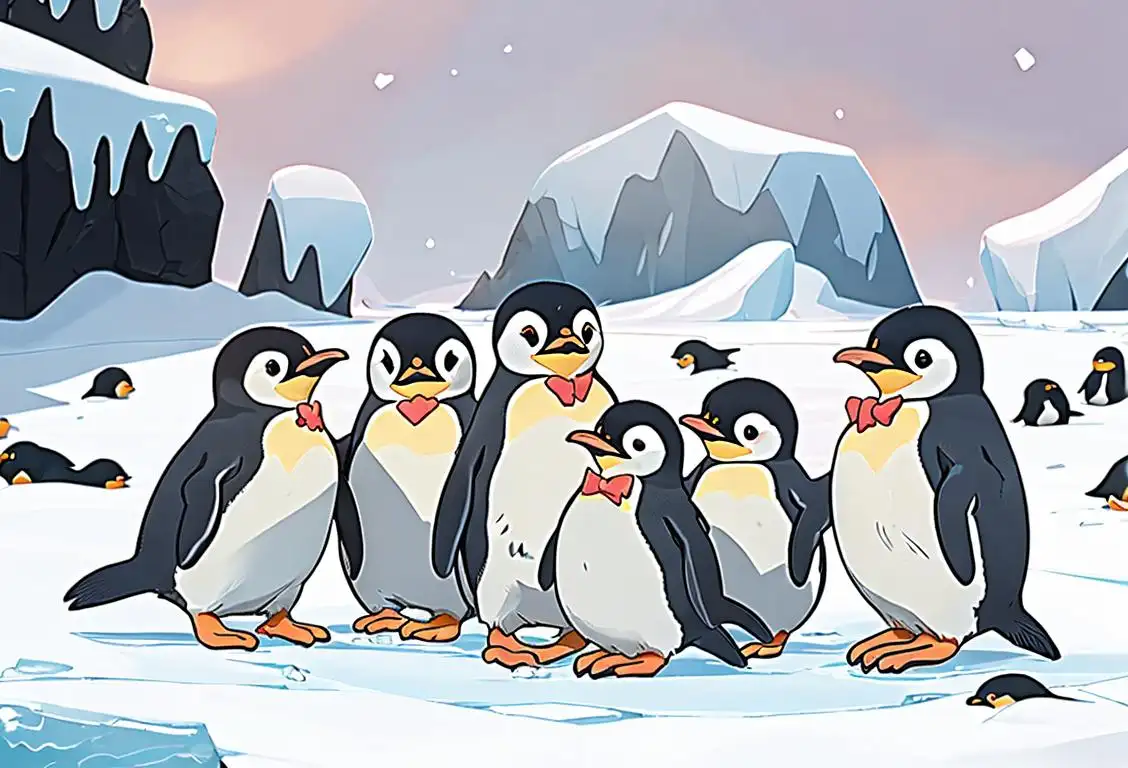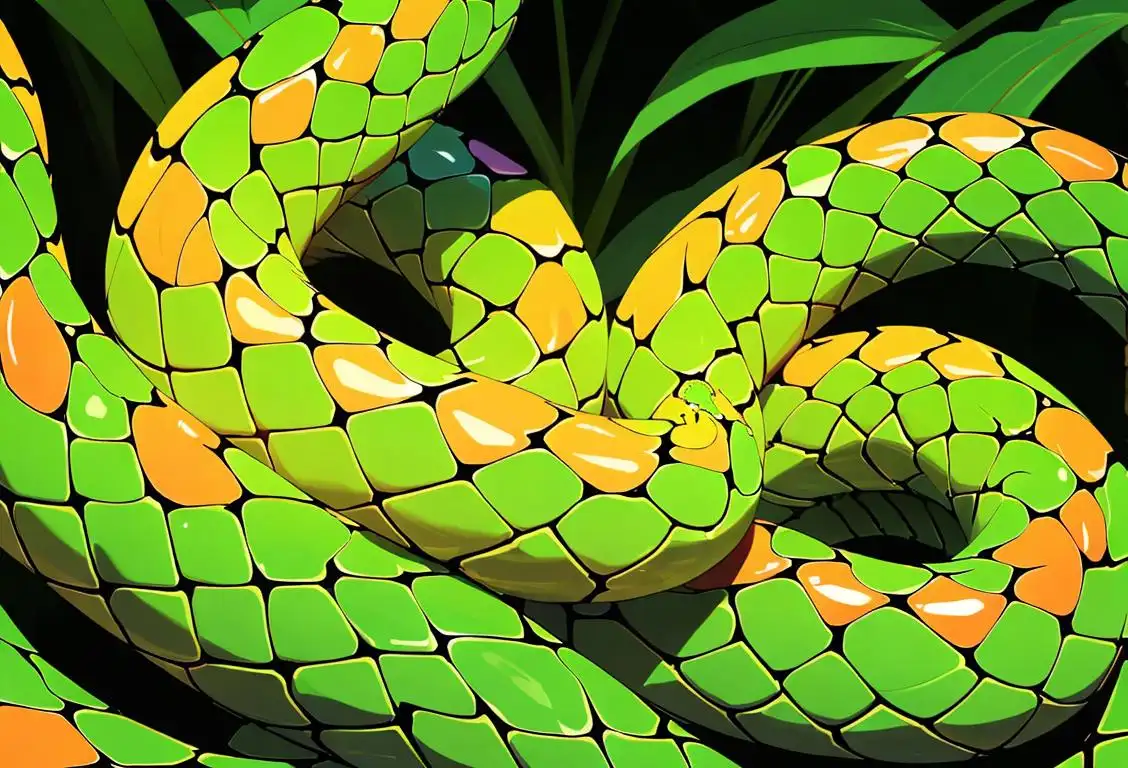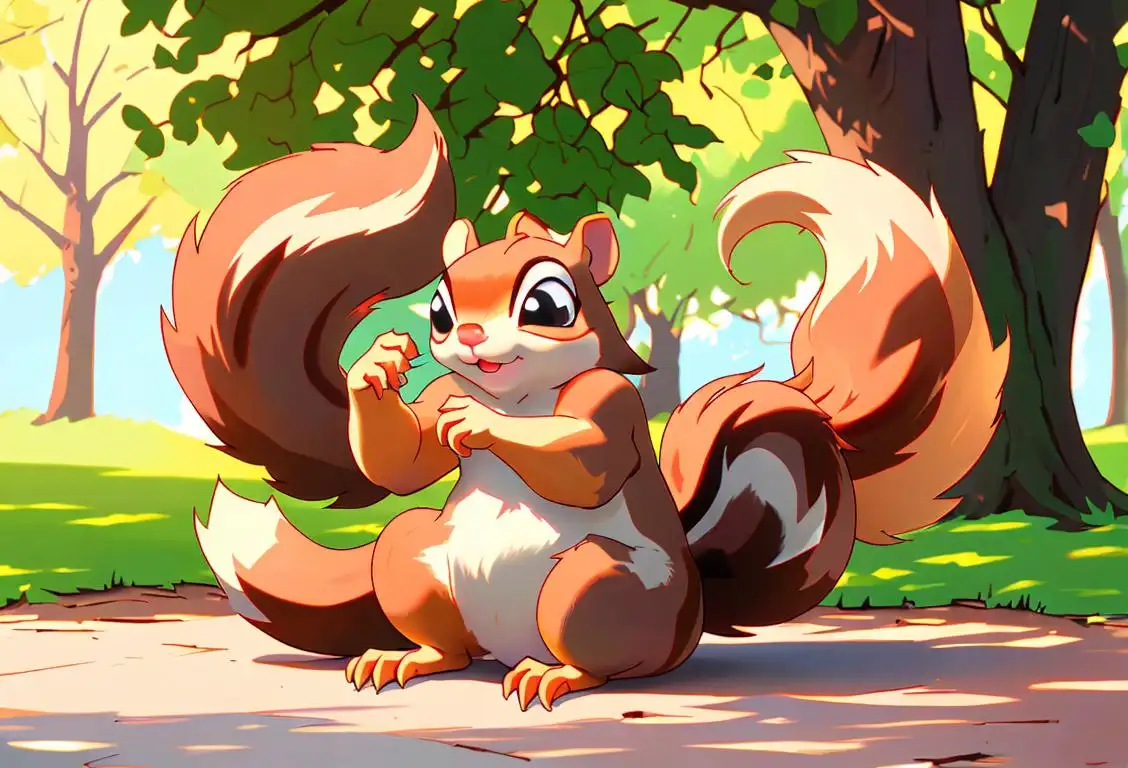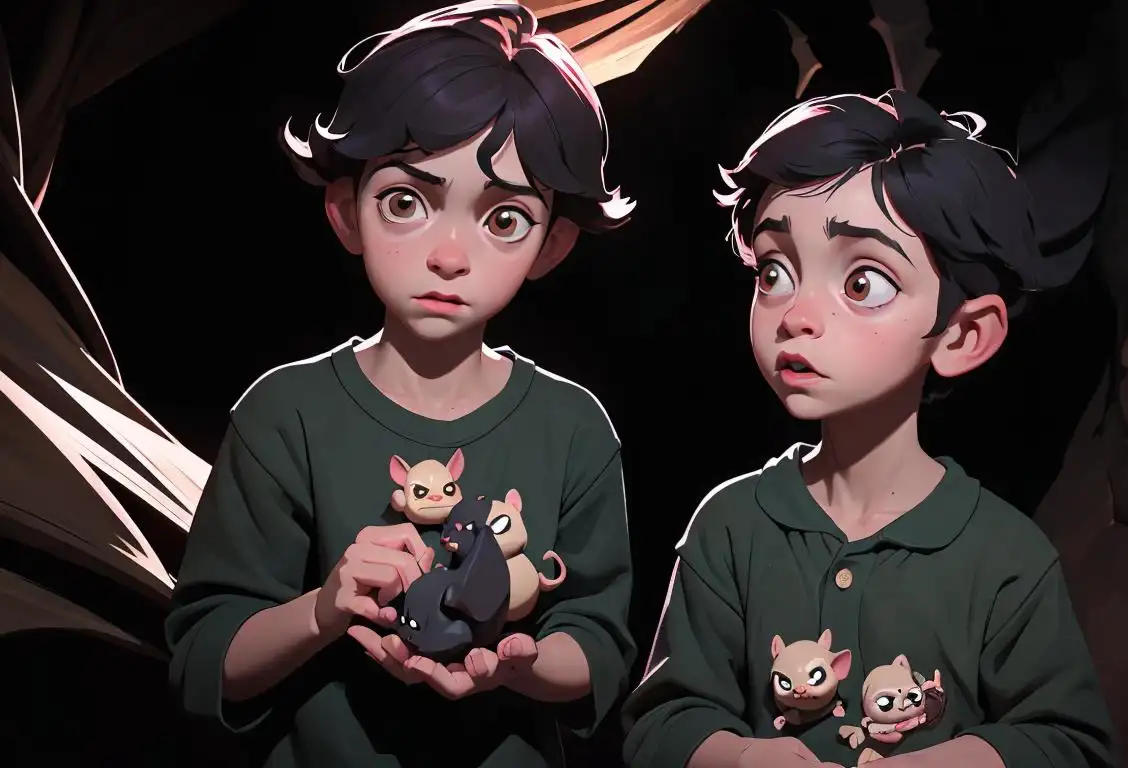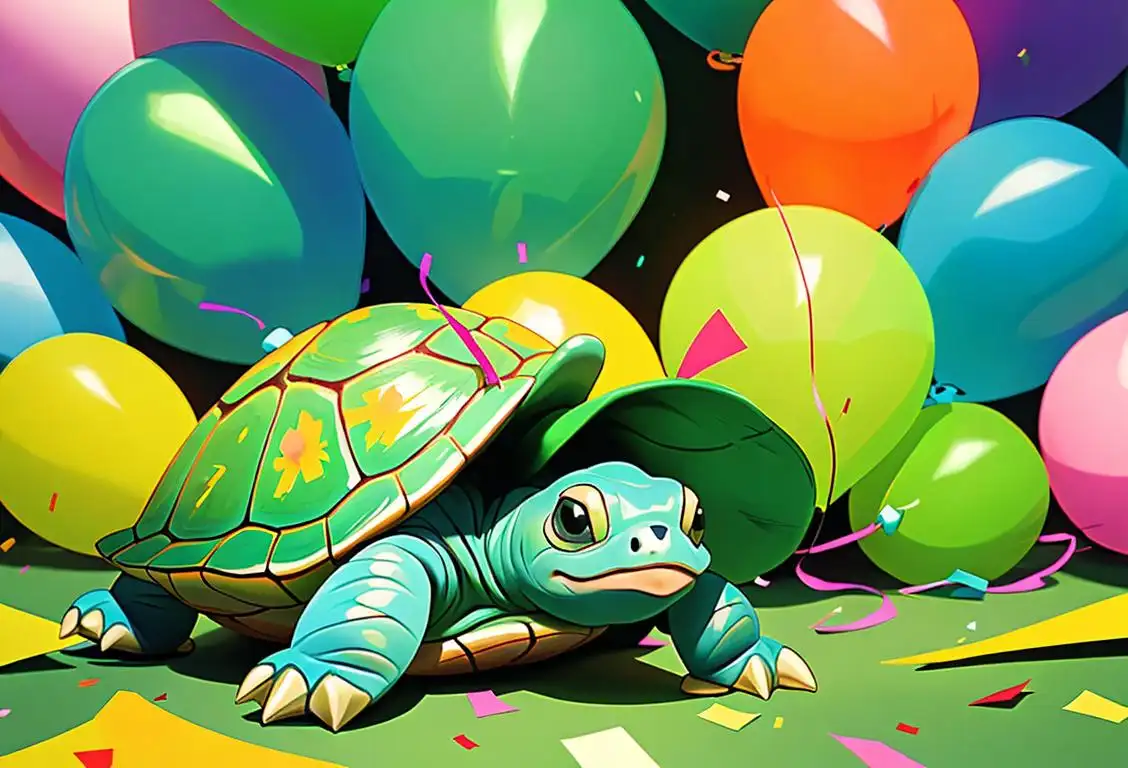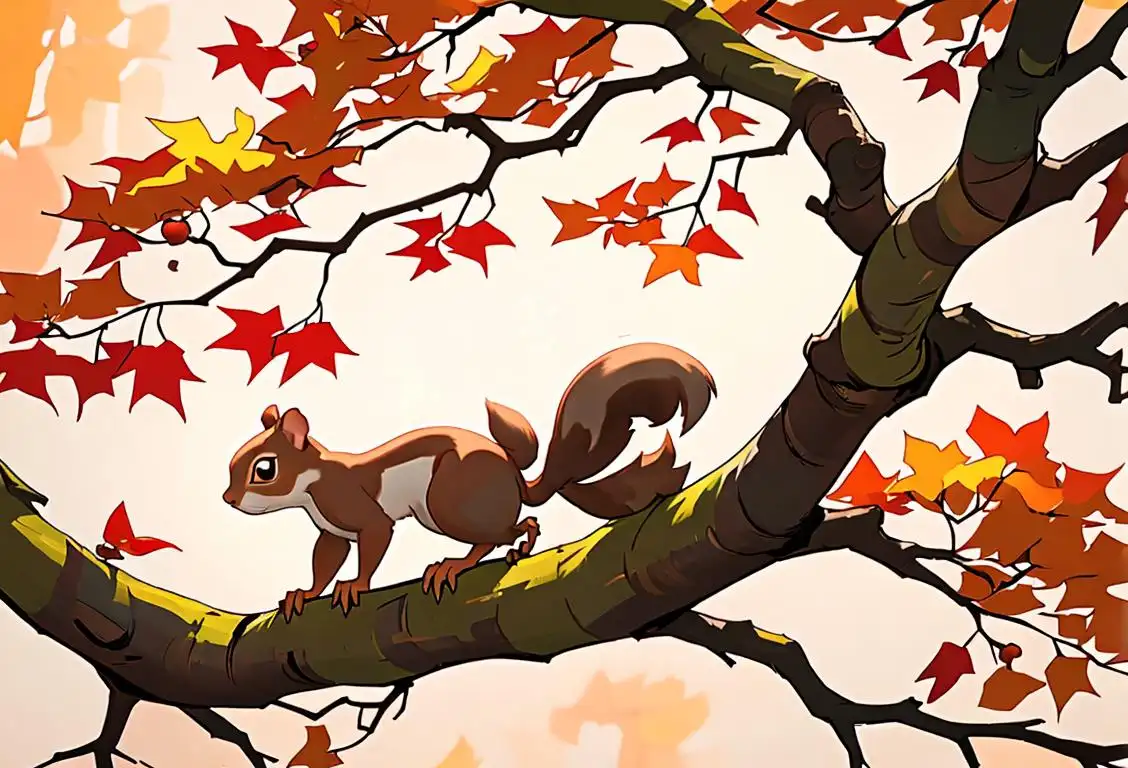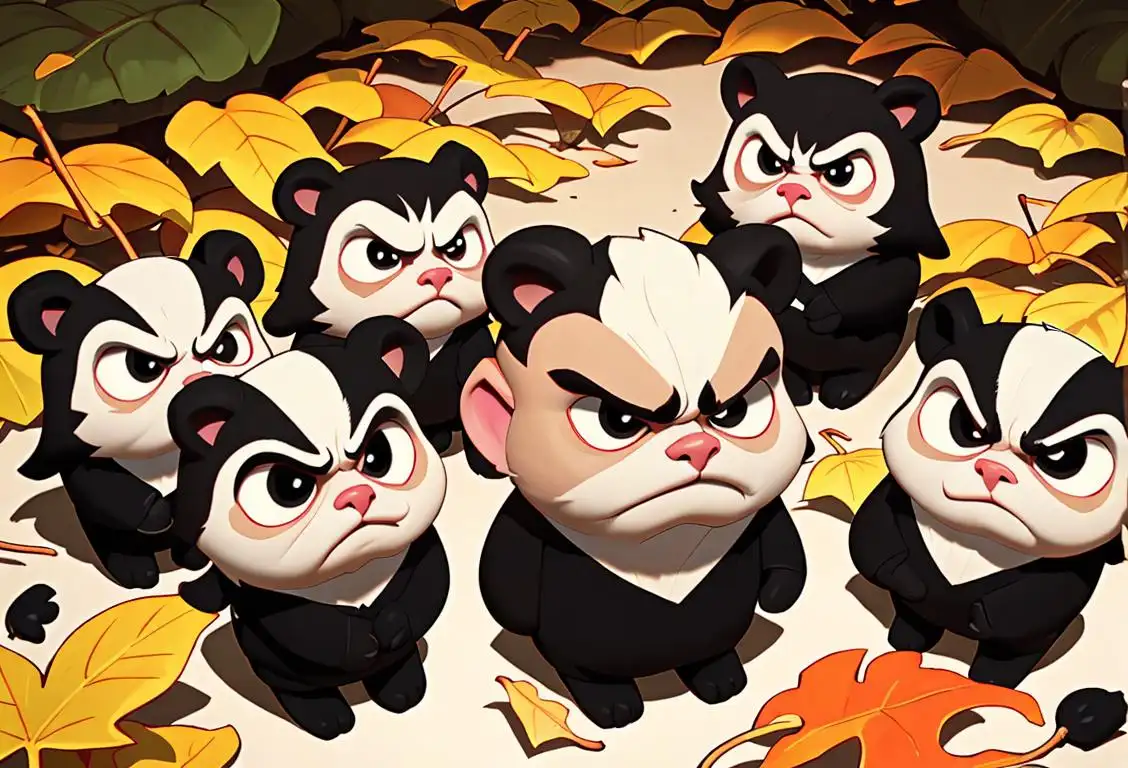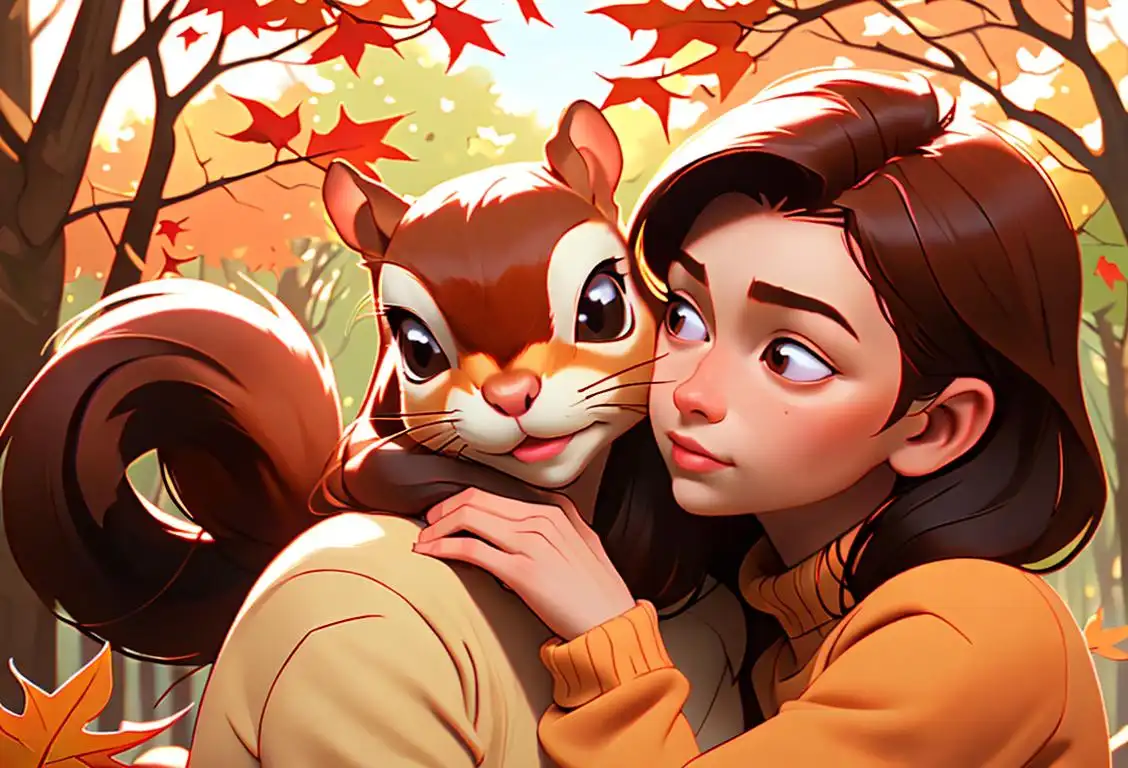National Cockatoo Day
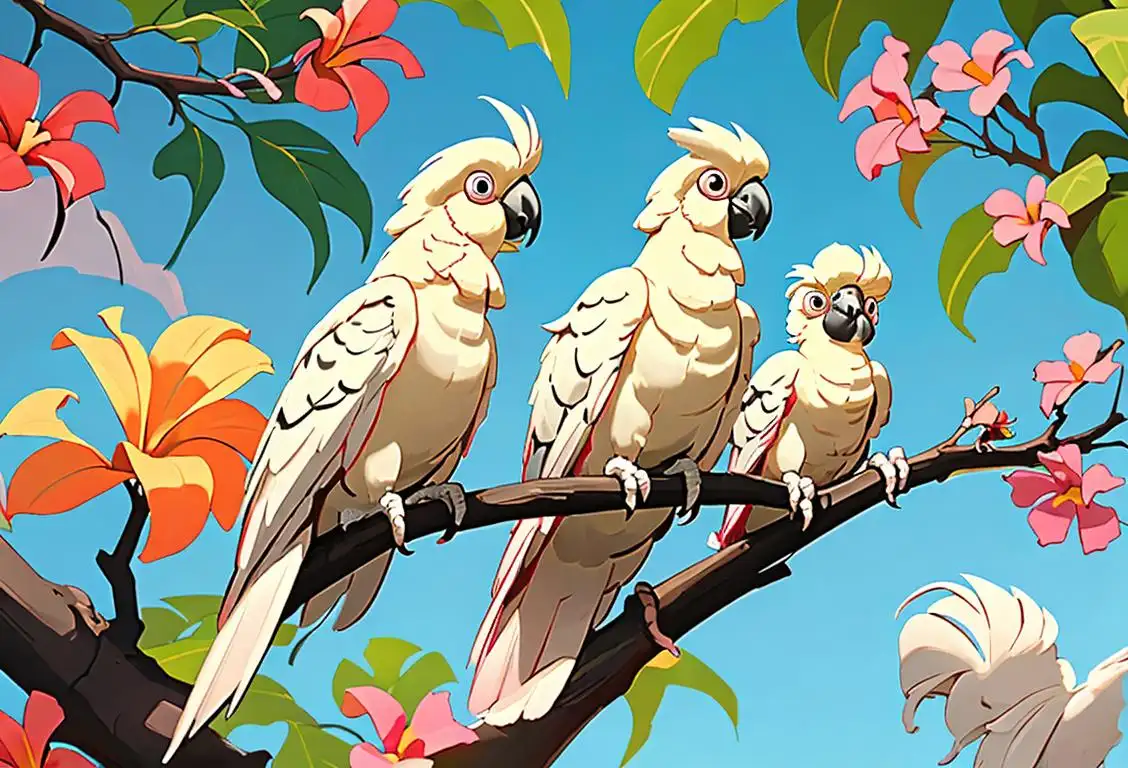
Happy National Cockatoo Day! Get ready to spread your wings and squawk with excitement as we celebrate these marvelous and magnificent birds. Whether you're a fan of their flamboyant feathers, their hilarious antics, or their ability to mimic sounds (including your embarrassing karaoke performances), today is the perfect day to express your love for these feathered friends.
When is Cockatoo Day?
It's national cockatoo day on the 25th November.
The Origins of National Cockatoo Day
While National Cockatoo Day may not have a well-documented history like some other national days, it has taken flight in recent years thanks to the popularity of these charming and charismatic birds. Cockatoos are known for their striking appearances and playful personalities, which have endeared them to bird lovers around the world.
With their impressive crests, vibrant plumage, and contagious enthusiasm, these birds have found their way into our hearts and homes. People have taken to social media to share their love for cockatoos, leading to the creation of this special day to honor them.
Celebrating National Cockatoo Day
On National Cockatoo Day, there are countless ways to pay tribute to these feathered wonders. Here are a few ideas to get you started:
- Dress up as a cockatoo and strut your stuff. Feather boas and cardboard beaks are highly encouraged.
- Visit a local bird sanctuary or zoo and spend some quality time with these winged celebrities. They'll love the attention, and you'll be rewarded with some unforgettable moments.
- Make cockatoo-inspired arts and crafts. Get creative with colorful feathers, construction paper, and googly eyes. Who knows, your masterpiece might catch the attention of a real cockatoo.
- Host a cockatoo-themed party and invite your friends over for a squawking good time. Serve bird-shaped cookies, decorate with feather garlands, and prepare your finest bird calls.
- Donate to organizations that support cockatoo conservation efforts. These birds face challenges in the wild, and your contribution can help protect their natural habitats.
Did You Know?
Cockatoos are not only masters of mimicry, but they are also talented dancers! These birds have been known to groove to the beat, bobbing their heads and busting a move when they hear music. So, next time you're feeling down, turn up the tunes and let a cockatoo-inspired dance party lift your spirits.
History behind the term 'Cockatoo'
1769
Encounter with New Bird Species
In 1769, the famous Captain James Cook and his crew embarked on a voyage that would forever change our understanding of the world. During their exploration of the east coast of Australia, they discovered a fascinating and colorful bird species. These birds were later identified as cockatoos, which are known for their striking plumage and unique crest.
1604
First reference of the term 'cockatoo'
The term 'cockatoo' was first recorded in 1604, used to describe a type of parrot with a distinct crest of feathers on its head. The word 'cockatoo' is believed to have originated from the Malay word 'kakatua' or the Dutch word 'kaketoe', both of which are onomatopoeic representations of the bird's call.
1781
Discovery of the Cockatoo
In the year 1781, the term 'cockatoo' made its first appearance in the English language. It was used to refer to a particular type of parrot with a distinctive crest and colorful plumage. The word 'cockatoo' is believed to have been derived from the Malay word 'kakatua', which also referred to this beautiful bird.
1611
Discovery by European Explorers
The term 'cockatoo' first entered the English language in 1611 when European explorers discovered the unique bird species in the tropical regions of Australia, Indonesia, and the Philippines. The bird's striking crest and colorful plumage caught the attention of these early explorers, who named it 'cockatoo' due to its distinct appearance and vocal nature.
1604
Discovery of the Cockatoo
In the year 1604, European explorers encountered the cockatoo for the first time during their voyages to the Indonesian archipelago. This captivating bird, known for its distinctive crest and raucous calls, immediately captured the attention of naturalists and collectors due to its unique appearance and engaging behavior. The word 'cockatoo' is believed to have derived from the Malay word 'kakatua', which was used by the locals to refer to the bird.
1530
Discovery and Naming
The term 'cockatoo' was first recorded in 1530 by Dutch explorers who encountered these unique birds in the Moluccas islands of Indonesia. They named these birds 'kakatuwah,' derived from the Malay word 'kakatua,' which means 'parrot.' The explorers were captivated by the cockatoo's brilliant white plumage and distinctive crest.
1639
Discovery in the New World
In 1639, Dutch explorers sailing in the East Indies stumbled upon a bird that would later be known as the cockatoo. The sighting occurred on the island of Tanimbar, which is part of present-day Indonesia. These explorers were amazed by the bird's vibrant colors, distinctive crest, and raucous call, leading them to name it 'kakatuwah,' derived from the Malay word 'kakatua.'
1604
Discovery and Naming
The term 'cockatoo' first appeared in writing in 1604, when Dutch navigator Willem Janszoon encountered these charismatic birds during his exploration of the Indonesian archipelago. He named them 'kakatoe' after the Malay word for 'parrot.' The distinctive feather crest and raucous calls of these birds captured the attention of early explorers and naturalists.
1773
Encounter with Captain Cook
In 1773, Captain James Cook encountered the cockatoo during his second voyage around the world. While exploring the east coast of Australia, Cook and his crew observed the bird's unique features and behavior. Impressed by its beauty and intelligence, they adopted the name 'cockatoo,' derived from the Dutch 'kakatuwah,' as the official English term for this species.
1773
English Adoption
In the late 18th century, British sailor and explorer Captain James Cook encountered cockatoos during his voyage along the eastern coast of Australia. He was particularly intrigued by these charming birds and introduced them to the English-speaking world. The English term 'cockatoo' was derived from the Dutch 'kakatuwah.'
18th century
Exploration and introduction to Europe
During the 18th century, European explorers and traders began encountering cockatoos during their voyages to Southeast Asia and the Pacific. These encounters led to the introduction of these striking birds to Europe, where they quickly gained fascination and popularity due to their unique appearance and intelligence.
1773
Cultural Encounter with Indigenous Peoples
During Captain Cook's second voyage in 1773, the crew had the opportunity to interact with the indigenous peoples of Australia. It was during these encounters that they discovered the local name for the bird species they had previously encountered - 'Gang-Gang,' which loosely translates to 'cockatoo' in English. The indigenous peoples had long revered and had cultural significance attached to these birds, which further piqued the curiosity of the explorers.
18th century
Companion of Seafarers
During the 18th century, seafarers and traders often encountered cockatoos on their voyages to exotic lands. These intelligent, social birds quickly gained popularity as companions aboard ships. Sailors were fascinated by their ability to mimic human speech, and cockatoos became cherished mascots for sailors, providing entertainment and a sense of companionship during long, isolated journeys at sea.
19th Century
Cockatoos as Exotic Pets
During the 19th century, cockatoos gained popularity as exotic pets. Their intelligent nature, attractive appearance, and ability to mimic human speech made them highly sought after. As more people began to keep cockatoos as pets, the term 'cockatoo' became more widely used and recognized.
1788
First European Captivity
In 1788, Captain Arthur Phillip and the First Fleet arrived in Australia and established a British penal colony in New South Wales. As European settlers encountered cockatoos in the region, the birds quickly became a symbol of the Australian landscape. Many cockatoos were captured and brought back to Europe, where they were kept as exotic pets.
1765
Scientific Classification
Nearly two centuries later, in 1765, the cockatoo officially entered the realm of scientific classification when the Swedish botanist Carl Linnaeus classified it under the genus 'Cacatua' in his groundbreaking work 'Systema Naturae.' Linnaeus, known as the father of modern taxonomy, grouped the cockatoo with other parrot species, recognizing its distinctive features, such as its zygodactyl feet and powerful beak.
19th Century
Avian Popularity and Trade
During the 19th century, the popularity of cockatoos soared as many people began keeping them as pets in Europe and North America. These charismatic birds became prized possessions, known for their ability to mimic human speech and their playful demeanor. Unfortunately, this popularity also led to an increase in the capture and international trade of wild cockatoos, threatening their populations in the wild.
1838
Scientific Classification
In 1838, the German naturalist Johann Friedrich Gmelin formally classified cockatoos as a distinct genus within the parrot family. He named the genus 'Cacatua' after the Malay word 'kakatua,' which was derived from the original Malay term 'kakatoe.' This scientific classification solidified the term 'cockatoo' as the common name for these birds.
19th century
Captivating Avian Exhibits
In the 19th century, the fascination with cockatoos extended beyond seafaring circles. Public interest in birds expanded, and the captivating nature of these exotic creatures led to their inclusion in avian exhibits and menageries. Cockatoos became a significant attraction, drawing crowds of curious spectators who marveled at their striking appearance, intelligence, and unique vocal abilities.
1834
Scientific Classification
The fascinating anatomy and behavior of the cockatoo led to its scientific classification. In 1834, German naturalist Johann Wagler classified this bird species under the family Cacatuidae. This classification highlighted the distinct features of cockatoos and their unique place within the avian world.
mid-19th century
Scientific classification and naming
In the mid-19th century, the scientific classification and naming of animals became more standardized. The term 'cockatoo' was formally adopted as the common name for the family of birds known as Cacatuidae, which includes various species of cockatoos. This classification helped to establish a systematic understanding of these beautiful birds.
1893
Cockatoo in Literature
In 1893, the famous French author Émile Zola included a cockatoo named Balthazar in his novel 'L'Œuvre'. This literary inclusion further enhanced the cultural significance of cockatoos and their association with beauty and exoticism. Cockatoos became a symbol of elegance and sophistication.
1805
John Latham's Classification
In 1805, the English naturalist and physician John Latham formally described the various species of cockatoos in his book 'A General Synopsis of Birds.' Latham's work provided important scientific insights into the classification and taxonomy of these unique birds. His contributions helped lay the foundation of the understanding we have today about different cockatoo species and their characteristics.
19th Century
Growing Popularity as Pets
Throughout the 19th century, cockatoos gained popularity as pets among the European elite. Their striking appearance, expressive personalities, and ability to mimic human speech captivated many animal enthusiasts. The demand for cockatoos soared, resulting in increased trade and the establishment of breeding programs to satisfy the growing market.
Late 19th to early 20th century
Cockatoos in the pet trade
During the late 19th and early 20th centuries, cockatoos gained popularity as pets worldwide. Their striking appearance, intelligent behavior, and ability to mimic human speech made them highly sought after. The demand for pet cockatoos led to increased capture and trade, causing concerns for their conservation in the wild.
20th Century
Cockatoo in Popular Culture
Throughout the 20th century, cockatoos continued to captivate popular culture. They frequently appeared in movies, cartoons, and advertisements, solidifying their status as iconic birds. Cockatoos, with their distinct crests and ability to perform tricks, became beloved characters and mascots in many different forms of media.
20th century
Beloved Avian Companions
Cockatoos gained popularity as pets in the 20th century, particularly among bird enthusiasts and animal lovers. Due to their intelligent and social nature, these birds became beloved companions in households around the world. Cockatoos formed strong bonds with their human caretakers, displaying affectionate behaviors, such as cuddling and offering comforting companionship. Their loyalty and playful personalities make them one of the most cherished pet birds today.
20th Century
Cockatoo Conservation Efforts
In the 20th century, conservation organizations and governments recognized the need to protect cockatoo species from habitat loss and illegal trade. Efforts were made to establish protected areas where these birds could thrive, and international agreements, such as the Convention on International Trade in Endangered Species (CITES), were implemented to regulate the trade of endangered cockatoo species. These conservation initiatives helped raise awareness about the importance of preserving the diverse and remarkable cockatoo species.
1869
Cockatoos in Culture
Cockatoos became highly sought-after pets in the 19th century, particularly among the affluent class. Their sociable nature, intelligence, and ability to mimic sounds made them popular companions. Cockatoos also found their way into literature and art, symbolizing beauty, elegance, and playfulness.
19th Century
Rise in Popularity
During the 19th century, cockatoos gained popularity as pets among European aristocracy and wealthy individuals. Their vocal abilities, striking appearance, and playful demeanor made them sought-after companions. Artists and writers also depicted cockatoos in their works, further cementing their cultural significance.
1831
First Cockatoos in Zoos
The early 19th century marked the beginning of the global fascination with cockatoos. In 1831, the first pair of cockatoos arrived at the London Zoo, making them one of the earliest zoo exhibits of these magnificent birds. This event brought cockatoos to the attention of the wider public, and their captivating appearance and distinctive vocalizations only added to their popularity.
20th Century
Australia's Iconic Symbol
By the 20th century, cockatoos had become an iconic symbol of Australia's unique wildlife. Their presence in the wild and their distinct calls enriched Australia's natural landscape. Cockatoos featured prominently in various forms of art, literature, and indigenous stories, cementing their cultural significance in the Australian identity.
Present
Symbol of the Tropics
Today, the term 'cockatoo' evokes images of the vibrant, tropical regions where these birds are native. Cockatoos have become a symbol of the beauty, exoticism, and biodiversity of these areas. Their important role in the ecosystem highlights the need for conservation efforts to protect their habitats and ensure the survival of these remarkable creatures.
20th Century
Conservation and Symbolism
As awareness grew regarding the importance of conservation, efforts were made to protect endangered cockatoo species. The white cockatoo, in particular, became a symbol of conservation in Australia. These birds are known for their longevity and social nature, further endearing them to the public. Today, cockatoos continue to captivate people worldwide with their intelligence and unique personalities.
Today
Cultural significance and conservation efforts
Cockatoos have become emblematic in various cultures and countries, symbolizing beauty, grace, and intelligence. Their distinctive crests and captivating personalities have inspired art, literature, and even music. Additionally, due to habitat loss and illegal trade, many species of cockatoos are now endangered or vulnerable. Conservation organizations and governments are actively working to protect these magnificent birds and raise awareness about their plight.
Today
Cockatoo Conservation Efforts
Today, there is a growing understanding of the importance of conservation to protect cockatoo populations in the wild. Several cockatoo species are considered threatened or endangered due to habitat loss and illegal pet trade. Efforts are being made to raise awareness and implement conservation measures to safeguard these magnificent birds.
1900s
Popularity as Pets
As the 20th century progressed, cockatoos gained considerable popularity as exotic pets. Their intelligence, social nature, and ability to mimic human speech made them captivating companions. However, this surge in demand also led to concerns about captive breeding and conservation efforts, highlighting the need to ensure the welfare and preservation of these remarkable birds.
20th Century
Conservation Efforts
As the 20th century progressed, conservation efforts increased to protect the various species of cockatoos. Due to habitat loss and the illegal pet trade, several species faced threats of extinction. Organizations like the World Parrot Trust and BirdLife International have partnered to conserve cockatoo populations and raise awareness about their importance in the ecosystem.
Modern Era
Conservation Efforts and Vulnerability
In the modern era, as human activities and habitat destruction intensified, cockatoos faced numerous threats to their survival. Recognizing the importance of preserving these majestic birds, conservation efforts were initiated to protect their habitats and combat illegal wildlife trade. Cockatoos now serve as ambassadors for broader conservation efforts in raising awareness about the preservation of biodiversity.
Present Day
Cockatoos in Popular Culture
Today, cockatoos continue to captivate both bird enthusiasts and the general public with their intelligence, beauty, and charm. Their presence in popular culture can be seen in various forms, from artwork and literature to movies and cartoons. Cockatoos have become symbols of tropical regions, and their iconic appearance often represents exotic beauty. Despite ongoing conservation efforts, some cockatoo species remain at risk, highlighting the need for continued awareness and conservation actions.
Did you know?
Cockatoos are not only masters of mimicry, but they are also talented dancers! These birds have been known to groove to the beat, bobbing their heads and busting a move when they hear music.Tagged
fun animals natureFirst identified
25th November 2015Most mentioned on
25th November 2015Total mentions
4Other days
Duck Out For A Drink Day
Mountain Hare Day
Penguin Day
Serpent Day
Hug A Squirrel Day
Bat Appreciation Day
Turtle Day
Squirrel Appreciation Day
Badger Day
Hug Squirrel Day
